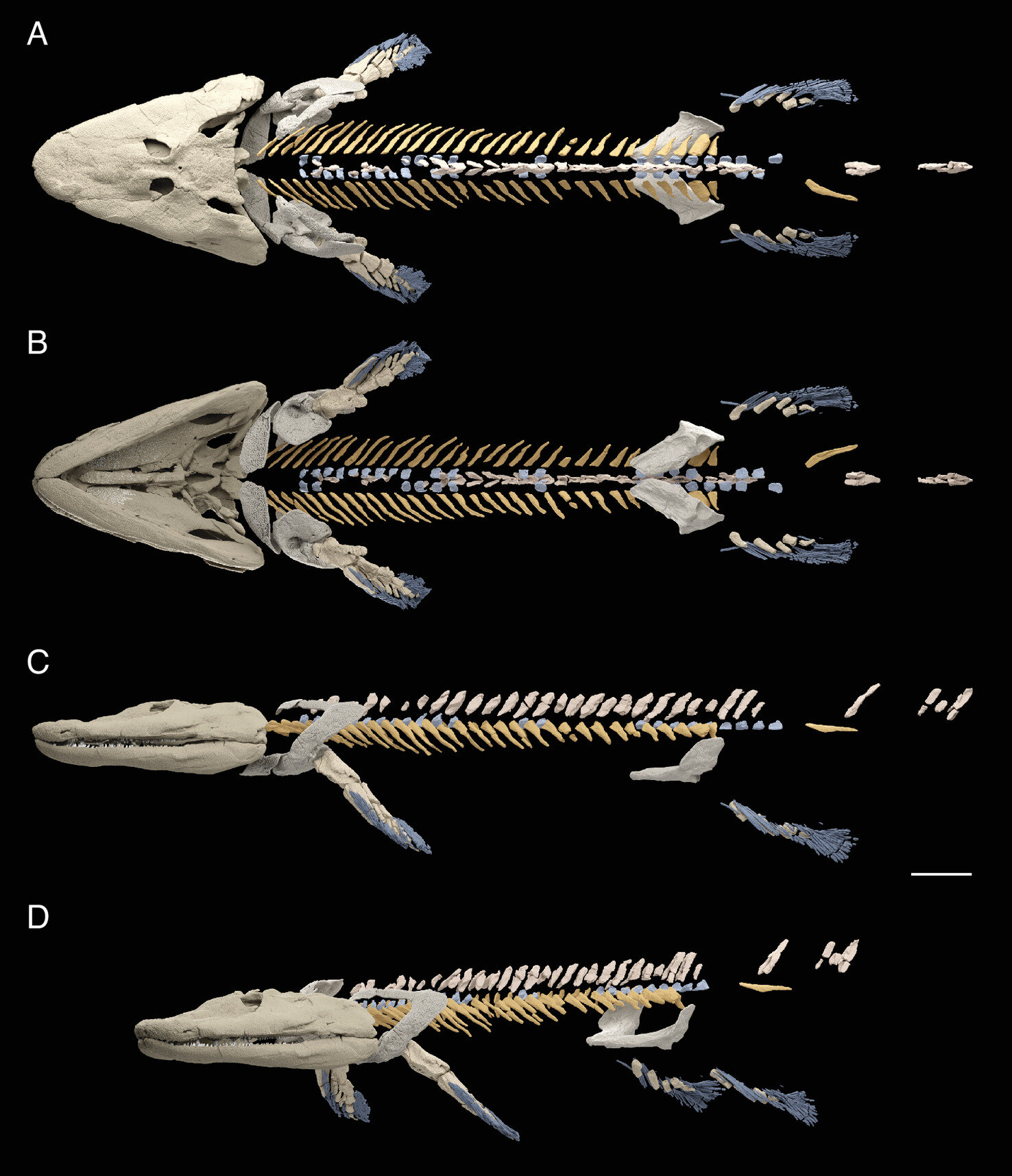Researchers, including Penn State biologist Tom Stewart, have completed a groundbreaking reconstruction of the skeleton of Tiktaalik, a 375-million-year-old fossil fish considered a close relative of limbed vertebrates.
This reconstruction, published in the Proceedings of the National Academy of Sciences, reveals a crucial innovation in Tiktaalik’s anatomy – the possible attachment of its ribs to its pelvis. This finding provides a missing piece in the puzzle of how our ancestors developed the skeletal support necessary for walking on land.
“Tiktaalik was discovered in 2004, but key parts of its skeleton were unknown,” explains Dr. Stewart. “These new high-resolution scans using microcomputed tomography (micro-CT) have finally revealed the vertebrae and ribs, allowing us to create a complete picture of its skeleton and understand how it moved.”
Unlike most fish with uniform vertebrae and ribs along their bodies, limbed vertebrates like humans exhibit regional variations in these structures. This regionalization is crucial for specialized functions, including the connection between ribs in the sacral region (lower back) and the pelvis, which allows the hind limbs to support the body weight.
Fish pelvic fins are the evolutionary precursors to hind limbs in tetrapods (four-limbed vertebrates). However, in fish, these fins and their supporting pelvic girdles are small and unconnected to the body’s main skeletal structure. For walking to evolve, these hind limbs and the pelvis needed to become larger and establish a connection with the vertebral column to bear the weight of the body.
“Tiktaalik offers a fascinating glimpse into this major evolutionary leap,” says Dr. Stewart. “Its entire skeleton displays a unique blend of fish-like features adapted for water and early land-dwelling characteristics.”
The initial description of Tiktaalik focused on the front portion of its skeleton, revealing a large skull, shoulder girdle, and pectoral fins. While the presence of large, robust ribs in this area hinted at a possible supportive function, their exact role remained unclear. In 2014, the discovery and analysis of the fish’s pelvis further fueled the ongoing research.
“We knew the pelvis and hind fins were substantial, but we lacked information on how they interacted with the spine,” explains Dr. Stewart. “This reconstruction, for the first time, provides a comprehensive picture of how these elements fit together, offering clues about the origins of walking.”
Unlike our own tightly joined hip bones, the connection between Tiktaalik’s pelvis and spine was likely formed by soft tissues such as ligaments. “These specialized ribs connected to the pelvis via ligaments,” Dr. Stewart elaborates. “Tiktaalik possessed a remarkable combination of features – large hind limbs, a substantial pelvis, and a pelvic-axial connection – all critical for the evolution of walking. While it probably wasn’t traversing land on its fins, it was certainly capable of new behaviors. This fish could likely prop itself up and use its hind fins for propulsion.”
The new reconstruction also unveils details about Tiktaalik’s head mobility and its pelvic fin anatomy, providing a wealth of information for further research. “This incredibly detailed picture of Tiktaalik’s skeleton paves the way for studies exploring how this creature moved and interacted with its environment 375 million years ago,” concludes Neil Shubin, a co-author of the study from the University of Chicago.
Tiktaalik serves as a vital link in our understanding of vertebrate evolution. The newly revealed features of its skeleton offer a compelling narrative of how fish fins transformed into limbs, paving the way for the emergence of land-dwelling creatures and ultimately, ourselves.
Source: Pennsylvania State University
